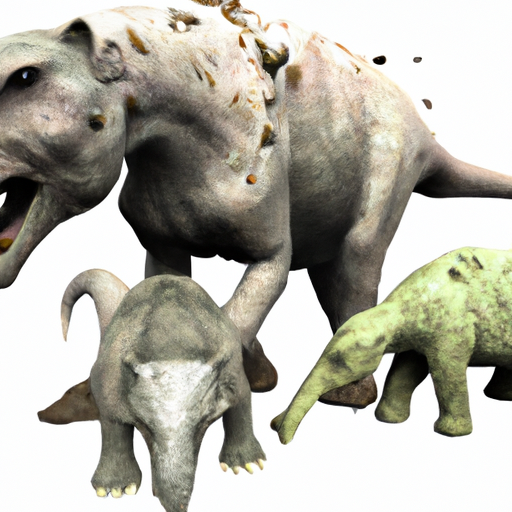 Introduction:
Introduction:
The Earth’s rich biodiversity has been home to countless species, each playing a unique role in maintaining the delicate balance of our ecosystem. However, throughout history, numerous animals have faced the tragic fate of extinction, often due to human activities or natural occurrences. This article aims to provide an extensive and detailed examination of some significant extinct animal species, shedding light on their characteristics, habitats, and the reasons behind their disappearance.
1. The Dodo (Raphus cucullatus):
Originating from the island of Mauritius in the Indian Ocean, the Dodo became a symbol of extinction. It was a flightless bird, approximately three feet tall, with a distinctive large beak and stout body. As humans settled on Mauritius in the 17th century, the Dodo’s habitat was destroyed, and they were hunted by sailors and introduced species, ultimately leading to their extinction by the late 17th century.
2. The Tasmanian Tiger (Thylacinus cynocephalus):
Native to Tasmania, Australia, and New Guinea, the Tasmanian Tiger, also known as the Thylacine, was one of the largest carnivorous marsupials. It possessed a unique blend of canine and feline features, with a stiff tail, sandy-colored fur, and stripes across its lower back. Despite being protected by law in 1936, the combination of hunting, habitat destruction, and disease led to its extinction by the mid-20th century.
3. The Quagga (Equus quagga):
The Quagga was a subspecies of the Plains Zebra, endemic to South Africa. It was characterized by a brownish coat with zebra-like stripes only on its head, neck, and shoulders. The Quagga became extinct in the late 19th century due to excessive hunting for its hide and competition with domestic livestock, as well as habitat loss.
4. The Great Auk (Pinguinus impennis):
The Great Auk was a flightless bird of the Northern Hemisphere, primarily found in the North Atlantic. Resembling a large penguin, it had a black and white body, a short neck, and a distinctive beak. The Great Auk was hunted extensively for its feathers, eggs, and meat, leading to its extinction by the mid-19th century.
5. The Passenger Pigeon (Ectopistes migratorius):
Once the most abundant bird species in North America, the Passenger Pigeon was known for its massive flocks, numbering in the billions. They had a blue-gray body and long tail feathers. Unfortunately, habitat destruction, hunting, and commercial exploitation resulted in the species’ rapid decline, leading to its extinction in the early 20th century.
6. The Woolly Mammoth (Mammuthus primigenius):
The Woolly Mammoth, an iconic Ice Age creature, was adapted to cold environments with its long, curved tusks, humped back, and thick, shaggy fur. Climate change, combined with human hunting, contributed to its extinction around 4,000 years ago. However, preserved specimens and DNA fragments have allowed scientists to study and learn more about this fascinating extinct species.
7. The Caribbean Monk Seal (Neomonachus tropicalis):
Endemic to the Caribbean Sea, the Caribbean Monk Seal was the only seal species to inhabit the region. With a sleek body, grayish-brown fur, and a distinctively round head, it primarily inhabited remote, tropical islands. Overhunting, habitat degradation, and competition with fishermen led to its extinction by the mid-20th century.
Conclusion:
The extinction of animal species is a poignant reminder of the impact human activities can have on the environment. Understanding the causes and consequences of these extinctions is crucial for conservation efforts and our responsibility to protect and preserve the remaining species on our planet. By learning from past mistakes, we can strive to ensure that future generations witness the awe-inspiring diversity of wildlife that once roamed our Earth.
